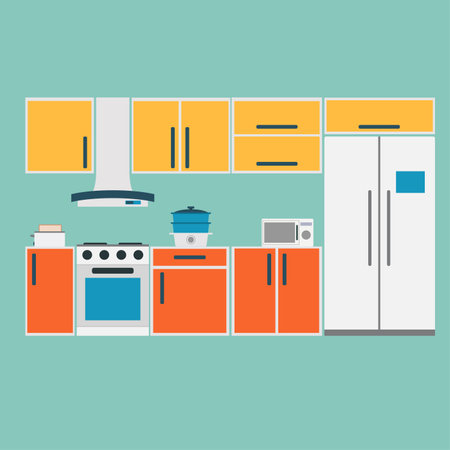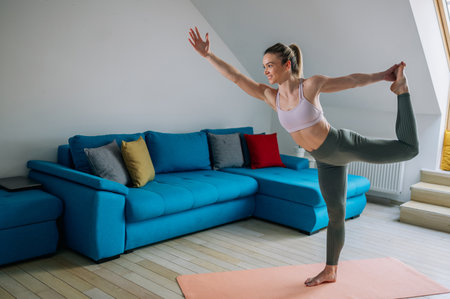Introduction: Blending Aesthetics with Accessibility
In recent years, British homes have witnessed a significant shift in interior design philosophies, with an increasing emphasis on harmonising style and practicality. The growing recognition of diverse living needs—ranging from the requirements of older adults to individuals with temporary or long-term disabilities—has prompted a reimagining of what it means for a home to be both beautiful and accessible. No longer are adaptive daily living equipment and assistive devices seen as clunky or clinical intrusions; instead, there is a movement towards integrating these features seamlessly into the aesthetics of modern homes. This evolution reflects not only a desire for inclusivity but also a commitment to dignity, independence, and personal expression within the living space. As British households continue to adapt to changing demographics and lifestyles, the importance of merging stylish design with practical solutions becomes ever more apparent, ensuring that everyone can enjoy a home that feels welcoming, functional, and uniquely their own.
2. Current Design Trends in Accessible Living
In the UK, interior design is embracing a beautiful blend of style and practicality, especially for accessible living spaces. Today’s most popular British design trends aim to ensure that homes are welcoming, comfortable, and supportive of diverse needs without sacrificing aesthetics. Let’s explore the key elements shaping stylish yet functional living environments.
Minimalist Layouts: Space to Breathe and Move
Minimalism remains at the heart of modern British interiors, focusing on open-plan layouts and uncluttered spaces. This approach not only creates a sense of calm and order but also allows for easier navigation—crucial for those using mobility aids or adaptive equipment. Furniture with clean lines and clever storage solutions helps maintain a tidy look while ensuring daily essentials are always within reach.
Natural Materials: Bringing the Outdoors In
British homes increasingly favour natural materials such as wood, stone, wool, and linen. These elements provide warmth and texture, making spaces feel inviting and serene. More importantly, they offer durability—essential for adaptive living environments where sturdy surfaces are needed. For instance, slip-resistant wooden flooring can be both elegant and safe, supporting independent movement around the home.
Neutral Colour Palettes: Calm, Cohesive Spaces
Neutral tones—think soft greys, warm beiges, and gentle whites—are highly popular in UK interiors. These shades create a restful backdrop that visually expands a room while allowing adaptive equipment to blend seamlessly into the overall décor. Touches of muted greens or blues can add personality without overwhelming the senses.
Integrating Adaptive Equipment with Style
| Design Feature | Aesthetic Benefit | Functional Value |
|---|---|---|
| Flush Thresholds & Wide Doorways | Sleek transitions between rooms | Easier access for wheelchairs & walkers |
| Bespoke Storage Solutions | Clutter-free appearance | Accessible organisation for daily items |
| Understated Grab Rails (in matching finishes) | Cohesive look with existing fixtures | Discreet support for safety & balance |
| Adjustable Lighting Systems | Modern ambiance & flexibility | Improved visibility tailored to user needs |
| Multi-functional Furniture (e.g., lift chairs) | Streamlined silhouettes fit any style | Comfort and assistance without visual bulk |
Towards Thoughtful British Interiors
The fusion of these design trends empowers individuals to enjoy beautiful surroundings that nurture independence and wellbeing. By choosing adaptive daily living equipment in harmony with minimalist layouts, natural materials, and soothing colours, British homes can be both stylish sanctuaries and truly functional spaces for all.

3. Innovative Adaptive Equipment for Everyday Life
In today’s UK homes, adaptive daily living equipment has evolved far beyond the utilitarian designs of the past. Modern aids are thoughtfully created to blend seamlessly with contemporary interiors, offering not only essential support but also a touch of style and sophistication. Brands such as Invisible Creations, Stiltz, and NRS Healthcare now provide a range of products that discreetly enhance independence while complementing your home décor.
For instance, grab rails are available in sleek matte finishes or brushed metals, doubling as towel holders or elegant bathroom accessories. Stairlifts now feature minimalistic lines and custom upholstery, allowing them to harmonise with your hallway or living area rather than standing out as medical equipment. Even kitchen aids, like ergonomic utensils and jar openers, are crafted in muted tones and modern shapes—ensuring they serve their purpose while remaining unobtrusive.
Many UK suppliers recognise the importance of dignity and choice in independent living. This is reflected in the wide variety of adaptive furniture—rise-and-recline chairs upholstered in high-quality fabrics, adjustable beds with stylish headboards, and portable ramps designed to fit discreetly at thresholds without drawing attention. Smart home technology is also making its mark: voice-activated lighting and automated curtains can be seamlessly integrated into existing systems to support daily routines without compromising on aesthetics.
By focusing on both form and function, these innovative adaptive solutions allow individuals to maintain their independence comfortably—and confidently—in environments that feel truly their own. The shift towards stylish yet practical design means that adapting your living space no longer requires sacrificing personal taste or the welcoming atmosphere you cherish in your home.
4. Integrating Technology and Smart Solutions
Across the UK, there is a growing movement towards embracing smart technology and assistive devices within domestic spaces, all with the aim of enhancing independence and wellbeing. British households are increasingly blending technology seamlessly into their homes, ensuring that comfort and support go hand in hand with stylish design. From voice-activated systems to discreet monitoring tools, these innovations make daily routines smoother and safer—without sacrificing aesthetics.
The Rise of Smart Home Devices
Smart home technology has become a cornerstone of modern living for many Britons, particularly those seeking to future-proof their homes or support loved ones with additional needs. Devices such as intelligent lighting, automated curtains, and programmable thermostats are now commonplace. These solutions not only boost energy efficiency but also allow residents to control their environment with simple voice commands or smartphone apps.
Assistive Technologies for Daily Living
Adaptive equipment has evolved considerably, moving away from clinical looks towards designs that harmonise with contemporary interiors. British designers are championing attractive yet functional assistive devices—from elegant grab rails to sleek fall-detection sensors. This thoughtful approach ensures that support is always at hand without detracting from the homes overall style.
Examples of Technology Integration in British Homes
| Device/Feature | Functionality | Design Consideration |
|---|---|---|
| Smart Lighting Systems | Adjustable brightness, remote operation | Discrete fittings in line with décor |
| Voice Assistants (e.g., Alexa) | Hands-free control of home functions | Sleek speakers blend into living spaces |
| Fall Detection Sensors | Automatic alerts to carers/family | Minimalist, unobtrusive placement |
| Automated Blinds & Curtains | Easy access for those with limited mobility | Custom fabrics to match interiors |
| Smart Plugs & Appliances | Remote or timed activation for safety and convenience | Compact design for seamless integration |
This thoughtful melding of technology with adaptive daily living equipment reflects a distinctively British emphasis on both dignity and design. By carefully selecting devices that complement rather than clash with existing décor, families are able to create supportive environments that feel truly like home—warm, welcoming, and wonderfully functional.
5. Personalising Accessible Spaces: Case Studies and Tips
Every home tells a story, and it’s entirely possible to create a living environment that’s both accessible and reflective of your personal taste. In the UK, where heritage homes and modern flats alike require thoughtful adaptation, blending functionality with style is not only achievable but deeply rewarding. Below, we explore practical examples and offer gentle guidance for anyone wishing to personalise their space without sacrificing accessibility or elegance.
Embracing Character with Adaptive Solutions
Consider the case of a Victorian terrace in Manchester. The owners needed wheelchair access but wanted to retain the property’s original features. By choosing ramps with timber finishes that complemented the existing floorboards and installing grab rails powder-coated in muted, heritage colours, they achieved seamless integration. The key is to select adaptive equipment in finishes and shades that harmonise with the home’s palette—think brushed brass rails for period properties or sleek chrome for contemporary spaces.
Adapting to Daily Life: Practical British Examples
For many British families, the kitchen is the heart of the home. Adjustable-height worktops and pull-down shelves allow everyone to participate in daily routines. One family in Surrey swapped out standard cupboard handles for D-shaped pulls in soft matt black, making them easier to use while adding a touch of modern sophistication. Likewise, installing lever taps instead of traditional knobs provides ease of use for those with limited dexterity while maintaining a streamlined look.
Tips for Personalisation Without Compromise
- Mix Textures and Materials: Use fabrics and finishes that reflect your style—cushions in bold prints or tactile throws can soften clinical lines.
- Opt for Modular Furniture: Choose pieces that can be easily reconfigured as needs change, such as adjustable shelving or extendable tables.
- Display Meaningful Items: Showcase cherished photographs or artwork at accessible heights, ensuring everyone can enjoy them.
Remember, creating an accessible home doesn’t mean sacrificing personality or comfort. With thoughtful choices inspired by British lifestyles—whether it’s a love of garden views or cosy reading nooks—it’s possible to craft a space that supports independence while feeling uniquely yours.
6. Conclusion: The Future of Inclusive Home Design in the UK
As we look ahead, it is heartening to witness how attitudes towards inclusive design are shifting across the UK. There is a growing recognition that adaptive daily living equipment can be both practical and stylish, supporting dignity and independence for everyone, regardless of age or ability. British homeowners, designers, and manufacturers are embracing innovation—moving away from clinical aesthetics toward beautiful, thoughtfully crafted solutions that enhance both quality of life and the character of our homes.
Fostering this culture of inclusion means moving beyond minimum standards and seeing accessible design as an opportunity for creative expression. Whether through bespoke joinery that seamlessly incorporates grab rails, or elegant furniture with hidden support features, adaptive products are now seen as integral to modern interiors rather than afterthoughts. This evolution reflects the UK’s tradition of valuing comfort and individuality in home environments.
Encouraging further progress requires continued collaboration between users, carers, architects, and policy-makers. By listening to lived experiences and supporting local innovation, we can ensure that adaptive equipment becomes ever more refined—meeting diverse needs while enhancing the beauty of British homes. Let us celebrate these positive changes and look forward to a future where inclusivity and elegance go hand in hand throughout every living space.


